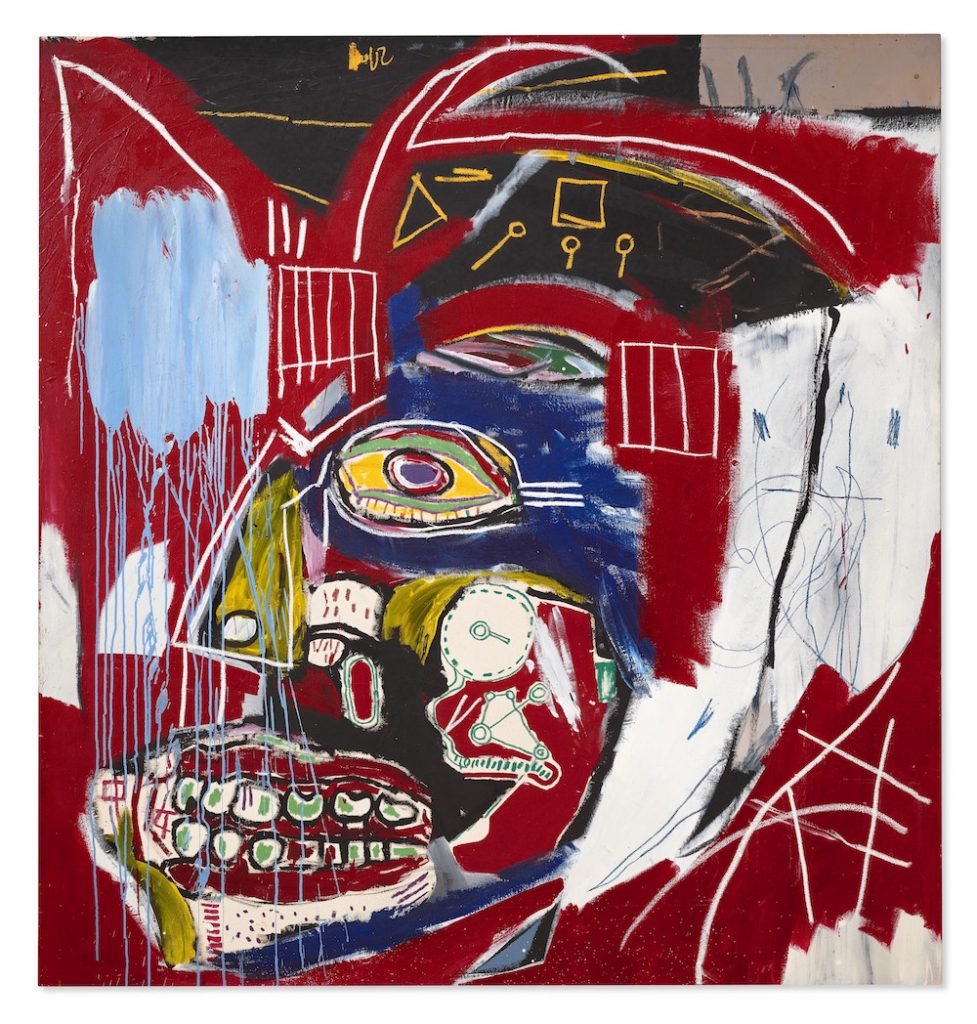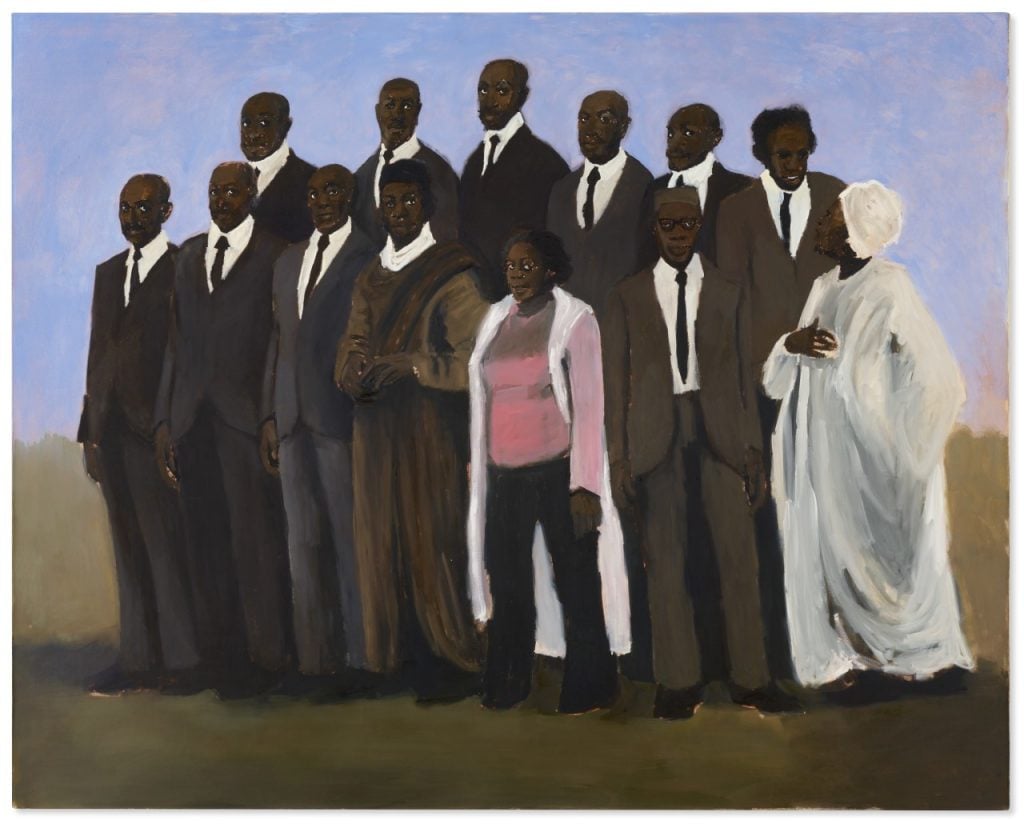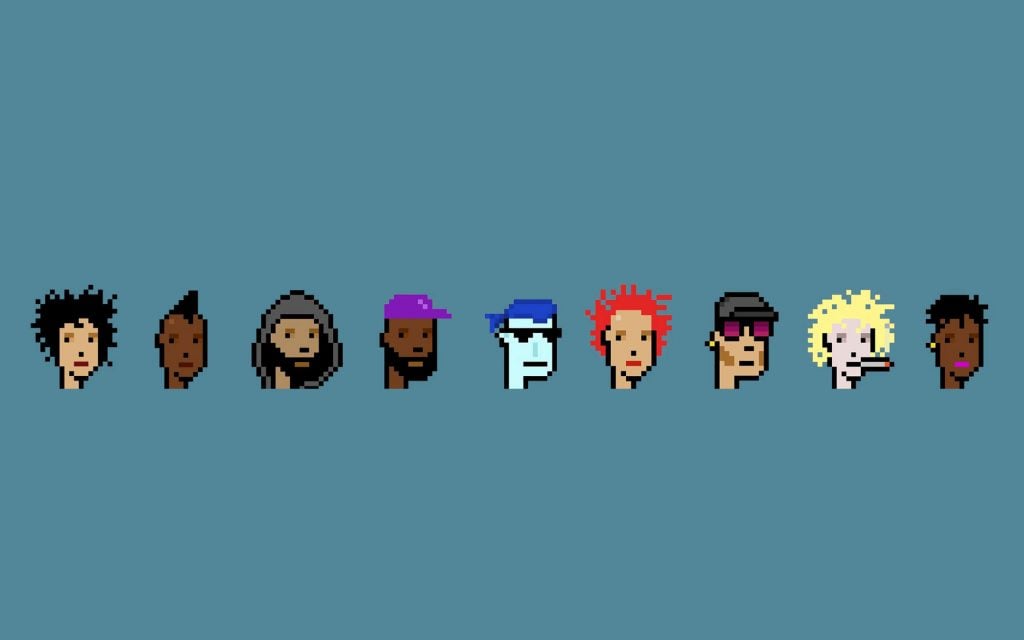Auctions
New York’s Auction Week Comes Roaring Back to Life at Christie’s $211 Million Contemporary Sale, Led by a Prized Basquiat Skull Painting
Plus, a pixelated 'Cryptopunks' NFT sold for $16.9 million.

Plus, a pixelated 'Cryptopunks' NFT sold for $16.9 million.

Katya Kazakina

A skull-head painting by Jean-Michel Basquiat soared to $93.1 million at Christie’s on Tuesday, offering the first glimpse of the demand for high-end art as the world begins to emerge from the pandemic.
The work accounted for nearly half of Christie’s $210.5 million haul for its 21st-century evening sale. The total, which included fees, surpassed the low presale target of $145 million. Of the 39 lots offered, just two didn’t find buyers and new records were set for 11 artists. Asian buyers snapped up 25 percent of lots, including another Basquiat and a Dana Schutz canvas.
“The results tonight are a proof that for the first time the demand and the supply were finally aligned,” said Christie’s C.E.O. Guillaume Cerutti, who called the market “resilient and dynamic.”
With no major 21st-century collection on the market, Christie’s had to assemble the auction piece by piece, said Ana Maria Celis, the head of the sale. Specialists focused on the past 40 years of art making, starting with Basquiat and ending with a diverse group of Black and female artists, as well as an NFT.
The success was also the result of tight choreography: 16 of the 39 works had been guaranteed and most were backed by third parties, ensuring they would sell. To spark the bidding, many estimates were kept below primary-market prices, and the reserves were considerably below the estimates.
A shift in taste was unmistakable. The mainstays of recent years—Gerhard Richter, Christopher Wool, Richard Prince—sold to their backers without any competition. On the other hand, fireworks erupted as buyers from all over the world chased after a new generation of stars, establishing records for Nina Chanel Abney ($990,000), Jordan Casteel ($687,500), Alex da Corte ($187,500), Lynette Yiadom-Boakye ($1.95 million), and El Anatsui ($1.95 million).

Lynette Yiadom-Boakye, Diplomacy III (2009). Courtesy of Christie’s Images, Ltd.
At least six hopefuls from New York and Hong Kong vied for Basquiat’s In This Case (1983), which was estimated at $50 million. The final price of $93.1 million (with premium) made it the second-highest price paid for a work by the artist ever sold at auction. The winner was an anonymous client of Celis.
Basquiat’s more than six-by-six-foot canvas depicts a large skull set against a ruby-red background, with a blazing eye, protruding green teeth, and fractured anatomy.
The seller was Italian businessman Giancarlo Giammetti, co-founder of the fashion house Valentino, according to people familiar with the work. It used to hang in Giammetti’s Manhattan apartment, where it was photographed above his dining table in a 2013 Architectural Digest spread. Christie’s declined to comment on the identity of the seller.
Paintings with skull imagery are among Basquiat’s most sought-after works. The symbol is part memento mori, an icon of death; part self-portrait; and part memorable logo, harkening back to Basquiat’s origins as a street artist.
In This Case last sold at auction for $999,500 at Sotheby’s in 2002. Giammetti purchased the painting from Gagosian in 2007. It is the last of three large skull canvases Basquiat made in successive years, according to Christie’s. The one painted in 1982 has held the $110.5 million auction record for the artist since 2017, when Japanese collector Yusaku Maezawa bought it at Sotheby’s New York.
“The strong prices really proved to me one thing,” art industry insider Josh Baer wrote in his BaerFaxt newsletter after the auction. The pandemic “made many wealthy people even wealthier over the past year and they are plunging deeper into the art market.”
As a nod to the digital art madness it unleashed in March with its $69 million Beeple sale, Christie’s for the first time included an NFT in its evening auction—and it paid off nicely.

Nine CryptoPunks, offered at Christie’s 21st century evening sale on May 13, 2021. Courtesy of Christie’s.
The oddly titled 9 Cryptopunks: 2, 532, 58, 30, 635, 602, 768, 603 and 757 is a set of nine digital images minted in 2017 by Larva Labs. Estimated at $7 million to $9 million, the work doubled expectations to sell for $16.9 million.
Software developers Matt Hall and John Watkinson, who co-founded Larva Labs, created a collection of 24-by-24, eight-bit-style pixel images. In total, there are 10,000 punks: 3,480 female, 6,039 male, and nine alien—one of which is included in the present lot—each with his or her own unique visual identity, determined by algorithms. (Although many characteristics are repeated, some—like muttonchops, earrings, big shades, crazy hair, hoodies, and mohawks—are more coveted than others.)
At least four bidders competed for the Cryptopunks, including two online, according to the auctioneer, Gemma Sudlow, who conducted the sale with confidence and charm. The buyer was a client of Alex Marshall, a Christie’s vice president and specialist. It was unclear as of press time what currency the buyer used—Christie’s had agreed to accept payments in Ether—or who ultimately won the work. The auction house declined to comment on buyer’s identity, and suggested instead to troll the Internet for clues.